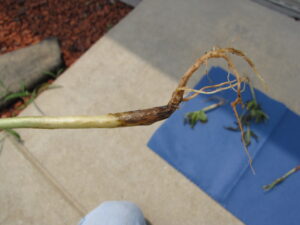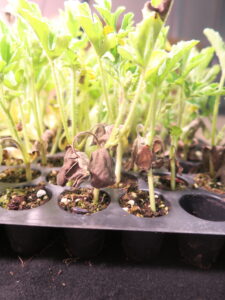Black root rot of Watermelon
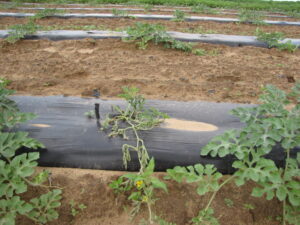
Figure 1. The symptoms of wilt in this watermelon could be from many causes. Black root rot can cause wilt such as seen here.
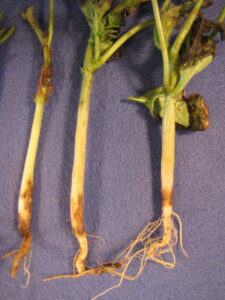
Figure 2. Dark areas on the hypocotyl of this watermelon seedling is caused by chlamydospores (resting spores) of the fungus that causes black root rot (Thielaviopsis basicola).
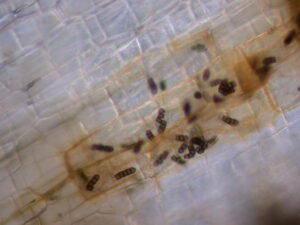
Figure 4. The structures seen here in root tissue are specialized spores known as chlamydospores. These spores are resilient resting spores that help the fungus survive for long periods in the soil. In addition, these spores impart a dark appearance to tissue.
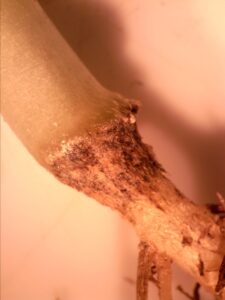
Figure 6. The watermelon transplants in the tray above are declining due black root rot which can be seen causing dark symptoms here on the hypocotyl.
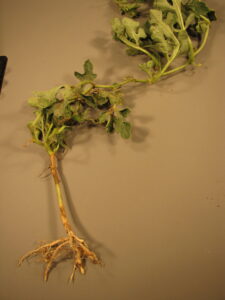
Figure 7. This watermelon is affected by gummy stem blight immediately below and above the cotyledon, black root rot at the lower hypocotyl and root knot nematodes on the roots.
